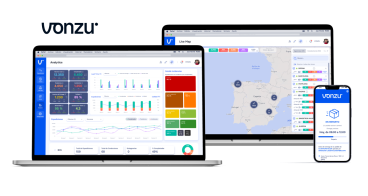Romania-Brasov: Inner city logistics
Background
Challenge
How can Brasov improve the distribution of goods in the historical centre to reduce congestion and air pollution?
Context
The historical centre of Brasov, Romania is under constant traffic congestion. Three main factors contribute to this situation: school mobility, delivery vehicles and tourists and local visitors searching for parking spots.
The historical centre was developed in a valley and is surrounded by mountains on 3 sides. Therefore, road capacity is very limited. Congestion often occurs given the low traffic capacity of the roads servicing the area. Most pressing are the two roundabouts at the end of Mureșenilor Street (the main artery servicing the historical centre) that are frequently congested causing gridlock in the area, sometimes generating queues longer than 1 km. The severe congestion in the central area traps citizens, logistics vehicles and crucial services like ambulances and public transport. Addressing this through innovative solutions could significantly improve mobility and ensure timely access to important services.
To address one of the three main causes of congestion, which is the loading and unloading of freight, one lane of Mureșenilor Street has been dedicated for short-term parking during specific time intervals. Outside these designated hours, parking in this lane is strictly prohibited. However, illegal parking, stopping, and drop-offs still occur, effectively blocking it throughout most of the day.
Beyond this lane, numerous unofficial parking spots have emerged where vehicles park to deliver goods or pick up food from restaurants in the pedestrian-only area (recently, over 80% of the core central area’s streets have become pedestrianised). Additionally, the situation affects air quality, which often exceeds permissible values for PM 1.0, PM 2.5, and noise pollution.
Seeking to promote a more efficient and sustainable logistics model in the inner city, the municipality is committed to implementing solutions that reduce the contribution of delivery traffic to congestion and pollution within the historic centre.
The expected solution
- Reduced traffic volume in the city centre: less than 800 vehicles per hour entering Mureșenilor Street in peak hours
- Improved conditions for local businesses to deliver food and receive supplies
- Decrease in the use of motorized vehicles for deliveries within the central area
- Improved air quality: lower number of hours per month with PM 1.0 and PM 2.5 exceeding the maximum threshold
- Reduced noise pollution on Mureșenilor Street: from 70 decibels to 50 decibels
Published on 4 March, 2024.






